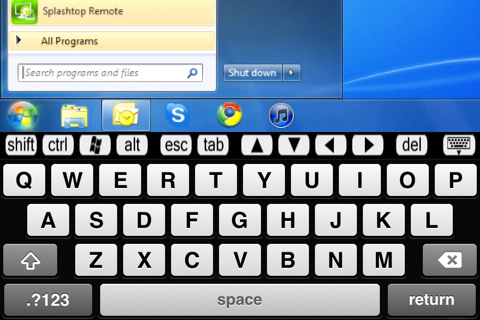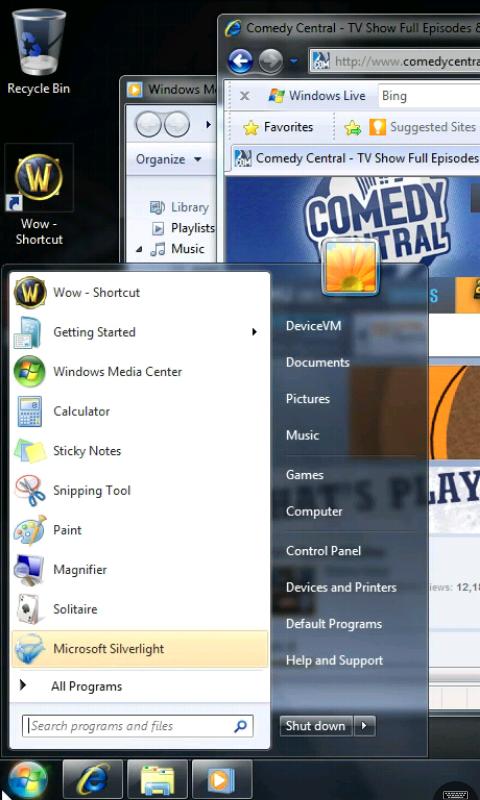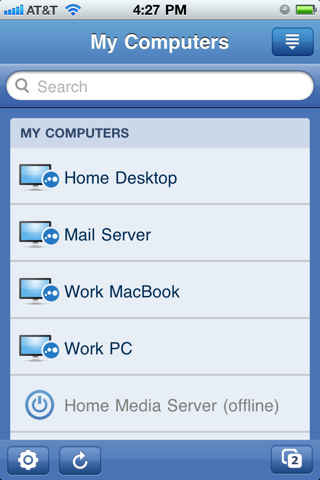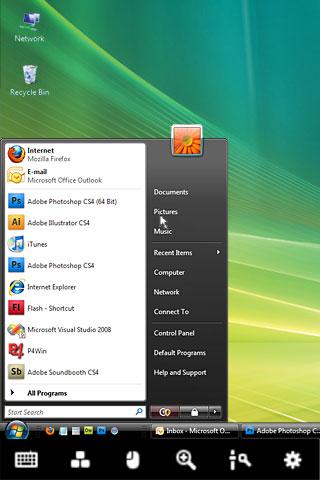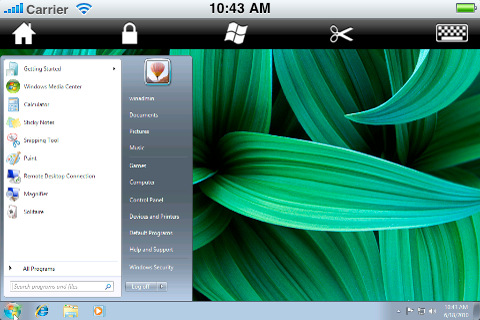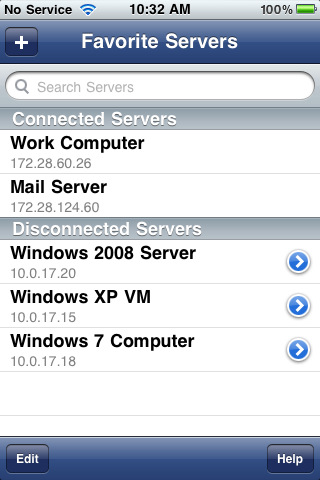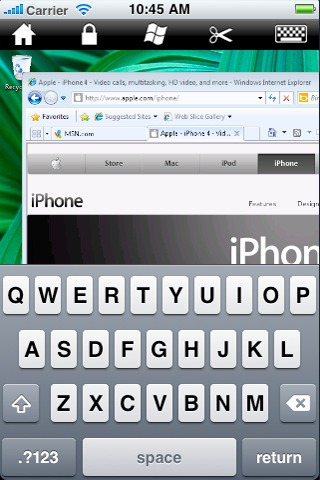Friday, July 29. 2011
Just How Dangerous Is Facial Profiling?
Via BigThink
-----
Within the next 60 days, state law enforcement agencies across the nation are set to implement a new facial profiling technologythat will enable them to scan faces of people in a crowd and cross-check this scan data with information already in their databases. Simply by equipping a so-called MORIS ("Mobile Offender Recognition and Information System") device to an iPhone, it will be possible to scan faces from as far as five feet away and perform iris scans at distances of six inches or less. The same technology that makes it possible to spot an Al Qaeda insurgent in Afghanistan or nab a suspected terrorist in New York City also makes it possible to nab an undocumented migrant worker in El Paso or Laredo. And therein lies the problem.
Facial profiling is, if not used properly, as dangerous to our privacy and civil liberties as racial profiling. Which faces will police officers scan in a crowd? And when do law enforcement agents have the right to scan your irises? Having your iris scanned, as some have suggested, is tantamount to being fingerprinted in public – and potentially, without you even knowing about it. Of course, as Emily Steel and Julia Angwin point out in the Wall Street Journal, taking photos of people passing through a public space is fully enabled by law. And it’s perfectly acceptable for a law enforcement to stop and detain someone if they have “reasonable suspicion” that a crime has been committed - or is about to be committed.
But what if they just don’t like your face? (Maybe you forgot to shave that morning, and your ironic hipster beard is starting to look a little too much like an Osama beard.)
Getting stopped and detained raises a whole host of other legal questions related to search-and-seizure. Do you have the right to resist an iris scan if you have been detained? Thus far, the courts have not yet had to rule on face- and iris-recognition technology. But, as law professor Orin Kerr from George Washington University points out, "A warrant might be required to force someone to open their eyes."
It’s perfectly possible that Facial Profiling by law enforcement authorities will cause a civil libertarian uproar. Just think of the TSA pat-down procedures at airports. How many of us enjoy getting a little extra grope on the way to our planes? If we think full-body scanners are invasive enough, what about a bunch of Bad Lieutenants in Arizona having a little fun with their new iPhone toy?
Every time a technology company comes up with an innovative new way to “protect” us, we move further into a civil liberties gray area. Nearly a decade ago, when Oracle announced plans for a national ID card, Larry Ellison came under a firestorm of commentary. Even as recently as the past 18 months, when companies like Facebook and Google have developed new facial recognition technologies that enable us to "tag" our friends in photos, there has been murmurs of dissent from privacy and civil libertarian activists.
At the end of the day, facial recognition technology doesn't profile people, people do. Some would argue that the more that law enforcement authorities know about us, the freer we are. They will be better able to protect us from the evil forces of Al Qaeda circulating in our midst. Yet, at some level, that argument begins to sound a bit Orwellian. War is Peace. Freedom is Slavery. Ignorance is Strength. So just how dangerous is facial profiling?
Trafic IP mobile : le streaming vidéo au coeur de la croissance
Via ItEspresso
-----
Selon Allot, la vidéo s'installe au coeur du trafic IP mobile au niveau mondial au grand dam des opérateurs. Sur ce segment, YouTube se distingue.
Le trafic IP sera assuré à 50% par la vidéo en 2012 et il a d’ores et déjà dépassé celui généré par le peer to peer en 2010.
De surcroît, les prévisions de Cisco précisent qu’il ira crescendo. C’est un constat similaire qui peut être fait si l’on dissèque le trafic IP mobile.
Au cours du premier semestre 2011, 39% du trafic IP a été généré par le streaming vidéo selon une enquête* réalisée par Allot Communications.
Sur la même période, le trafic IP mobile a augmenté de 77% (contre 73% sur le deuxième semestre 2010).
YouTube tient les rênes du streaming vidéo sur mobile comptant pour 52% de sa totalité.
Près d’un octet sur quatre atterrissant sur les mobiles (22% du trafic IP précisément) provient des serveurs de la plate-forme vidéos de Google.
Certes, YouTube est un « ténor de la bande passante » mais, dès que l’on parle part de marché, c’est Skype, le service de VoIP acquis récemment par Microsoft, qui se taille la part du lion.
La voix sur IP a augmenté de 101%, et Skype avec 82% du trafic règne sans partage.
Et de partage, il est question lorsqu’on évoque la messagerie instantanée.
Talonné de très près par Windows Live avec 25%, Yahoo Messenger est premier avec 29% du trafic IP mobile lié à la messagerie instantanée.
Suivent la messagerie instantanée QQ en langue chinoise (18%) puis Google Talk avec 12%.
La part substantielle du streaming vidéo dans le trafic IP mobile ne saurait également cacher l’envolée des réseaux sociaux.
Twitter peut s’enorgueillir d’une croissance de 297% sur les mobiles au cours du premier semestre 2011 tandis que Facebook a augmenté de 166%.
On pourra s’en étonner : la navigation sur Internet n’arrive qu’à la troisième place avec 25% du trafic IP, derrière le partage de fichiers (29%).
Et si le trafic IP sera servi par une croissance des infrastructures, de leur côté, les opérateurs mobiles freinent des quatre fers.
51% d’entre eux affirment ne plus proposer d’abonnements avec données illimitées.
C’est un engorgement des réseaux 3G notamment en zone urbaine qui apparait comme le coupable idéal avec en filigrame le retard de la 4G LTE.
Le marché semble également s’orienter vers un usage « téléguidé » de la bande passante.
Ainsi, 32% des opérateurs ont mis en place un service de passe-droit quand il s’agit de certaines applications ou quand l’illimité est limité à certains usages de la 3G.
Ces données, si elles sont riches d’enseignement, ne renseignent pas sur les pics de trafic générés.
La 4G LTE (avec son débit pic de 1Gigabit/s) puis sa version avancée seront vitales pour les absorber.
Notamment lorsqu’il s’agira de streaming vidéo d’évènements « live ».
New Geographic Data Analysis Gives Historians a Futuristic Window Into the Past
Via POPSCI
By Rebecca Boyle
-----
"Spatial humanities," the future of history

Even using the most detailed sources, studying history often requires a great imagination, so historians can visualize what the past looked and felt like. Now, new computer-assisted data analysis can help them really see it.
Geographic Information Systems, which can analyze information related to a physical location, are helping historians and geographers study past landscapes like Gettysburg, reconstructing what Robert E. Lee would have seen from Seminary Ridge. Researchers are studying the parched farmlands of the 1930s Dust Bowl, and even reconstructing scenes from Shakespeare’s 17th-century London.
But far from simply adding layers of complexity to historical study, GIS-enhanced landscape analysis is leading to new findings, the New York Times reports. Historians studying the Battle of Gettysburg have shed light on the tactical decisions that led to the turning point in the Civil War. And others examining records from the Dust Bowl era have found that extensive and irresponsible land use was not necessarily to blame for the disaster.
GIS has long been used by city planners who want to record changes to the landscape over time. And interactive map technology like Google Maps has led to several new discoveries. But by analyzing data that describes the physical attributes of a place, historians are finding answers to new questions.
Anne Kelly Knowles and colleagues at Middlebury College in Vermont culled information from historical maps, military documents explaining troop positions, and even paintings to reconstruct the Gettysburg battlefield. The researchers were able to explain what Robert E. Lee could and could not see from his vantage points at the Lutheran seminary and on Seminary Hill. He probably could not see the Union forces amassing on the eastern side of the battlefield, which helps explain some of his tactical decisions, Knowles said.
Geoff Cunfer at the University of Saskatchewan studied a trove of data from all 208 affected counties in Texas, New Mexico, Colorado, Oklahoma and Kansas — annual precipitation reports, wind direction, agricultural censuses and other data that would have been impossible to sift through without the help of a computer. He learned dust storms were common throughout the 19th century, and that areas that saw nary a tiller blade suffered just as much.
The new data-mapping phenomenon is known as spatial humanities, the Times reports. Check out their story to find out how advanced technology is the future of history.
Thursday, July 28. 2011
The History of Android Version Releases
Via Android Tapp
-----
![The History of Android Version Releases [Infographic]](http://blog.computedby.com/cby/images/46_1313483255_0.jpg)
Check out this infographic by [x]cubelabs showing the history of Android version releases to date… even tossing in a factoid of when Android was officially started then acquired by Google. The graphic shows key feature highlights in each milestone and concludes with today’s snapshot, which shows most Android devices with Android 2.2 (Froyo). Have a look!
Decoding DNA With Semiconductors
Via New York Times
By Christopher Capozziello
-----

The inventor Jonathan Rothberg with a semiconductor chip used in the Ion Torrent machine.
The inventor of a new machine that decodes DNA with semiconductors has used it to sequence the genome of Gordon Moore, co-founder of Intel, a leading chip maker.
The inventor, Jonathan Rothberg of Ion Torrent Systems in Guilford, Conn., is one of several pursuing the goal of a $1,000 human genome, which he said he could reach by 2013 because his machine is rapidly being improved.
“Gordon Moore worked out all the tricks that gave us modern semiconductors, so he should be the first person to be sequenced on a semiconductor,” Dr. Rothberg said.
At $49,000, the new DNA decoding device is cheaper than its several rivals. Its promise rests on the potential of its novel technology to be improved faster than those of machines based on existing techniques.
Manufacturers are racing to bring DNA sequencing costs down to the point where a human genome can be decoded for $1,000, the sum at which enthusiasts say genome sequencing could become a routine part of medical practice.
But the sequencing of Dr. Moore’s genome also emphasizes how far technology has run ahead of the ability to interpret the information it generates.
Dr. Moore’s genome has a genetic variant that denotes a “56 percent chance of brown eyes,” one that indicates a “typical amount of freckling” and another that confers “moderately higher odds of smelling asparagus in one’s urine,” Dr. Rothberg and his colleagues reported Wednesday in the journal Nature. There are also two genetic variants in Dr. Moore’s genome said to be associated with “increased risk of mental retardation” — a risk evidently never realized. The clinical value of this genomic information would seem to be close to nil.
Dr. Rothberg said he agreed that few genes right now yield useful genetic information and that it will be a 10- to 15-year quest to really understand the human genome. For the moment his machine is specialized for analyzing much smaller amounts of information, like the handful of genes highly active in cancer.
The Ion Torrent machine requires only two hours to sequence DNA, although sample preparation takes longer. The first two genomes of the deadly E. coli bacteria that swept Europe in the spring were decoded on the company’s machines.
The earliest DNA sequencing method depended on radioactivity to mark the four different units that make up genetic material, but as the system was mechanized, engineers switched to fluorescent chemicals. The new device is the first commercial system to decode DNA directly on a semiconductor chip and to work by detecting a voltage change, rather than light.
About 1.2 million miniature wells are etched into the surface of the chip and filled with beads holding the DNA strands to be sequenced. A detector in the floor of the well senses the acidity of the solution in each well, which rises each time a new unit is added to the DNA strands on the bead. The cycle is repeated every few seconds until each unit in the DNA strand has been identified.
Several years ago, Dr. Rothberg invented another DNA sequencing machine, called the 454, which was used to sequence the genome of James Watson, the co-discoverer of the structure of DNA. Dr. Rothberg said he was describing how the machine had “read” Dr. Watson’s DNA to his young son Noah, who asked why he did not invent a machine to read minds.
Dr. Rothberg said he began his research with the idea of making a semiconductor chip that could detect an electrical signal moving across a slice of neural tissue. He then realized the device he had developed was more suited to sequencing DNA.
George Church, a genome technologist at the Harvard Medical School, said he estimated the cost to sequence Dr. Moore’s genome at $2 million. This is an improvement on the $5.7 million it cost in 2008 to sequence Dr. Watson’s genome on the 454 machine, but not nearly as good as the $3,700 spent by Complete Genomics to sequence Dr. Church’s genome and others in 2009.
Dr. Rothberg said he had already reduced the price of his chips to $99 from $250, and today could sequence Dr. Moore’s genome for around $200,000. Because of Moore’s Law — that the number of transistors placeable on a chip doubles about every two years — further reductions in the cost of the DNA sequencing chip are inevitable, Dr. Rothberg said.
Stephan Schuster, a genome biologist at Penn State, said his two Ion Torrent machines were “outstanding,” and enabled a project that would usually have taken two months to be completed in five days.
There is now “a race to the death as to who can sequence faster and cheaper, always with the goal of human resequencing in mind,” Dr. Schuster said.
Wednesday, July 27. 2011
Volume of data darn near indescribable ...
Via Network World
-----
The world's digital data is doubling every two years and the amount created or replicated in 2011 will reach 1.8 zettabytes, a pile so gargantuan that its size can only be rendered understandable to the layman when translated into iPads.
That's right, words no longer suffice; we need something magical for this job.
The problem is presented in a press release touting the fifth annual IDC Digital Universe study, sponsored by EMC. A bar chart, right, and enormous infographic at the bottom of this post will give you an overview of the study's findings. Here we're going to try to get our minds around 1.8 zettabytes. The sentences in bold are from the press release.
In terms of sheer volume, 1.8 zettabytes of data is equivalent to:
Every person in the United States tweeting 3 tweets per minute for 26,976 years nonstop.
The trouble here is that even if you know the population of the United States (311 million, give or take) and the length of a tweet (140 characters, maximum) you're still left to plug those pieces into a length of time (26,976 years) that has no meaning to most anyone not a paleontologist.
Every person in the world having over 215 million high-resolution MRI scans per day.
Don't worry, I looked it up for you; the world has almost 7 billion people. And while I haven't the foggiest notion as to how much data would be represented by a single high-resolution MRI scan, never mind 215 million of them, I can tell you based on recent experience that the so-called "open MRI machines" are really not all that open.
Over 200 billion HD movies (each 2 hours in length) - Would take 1 person 47 million years to watch every movie.
Honestly, that one doesn't help at all.
But look what happens when the study's authors use their handy-dandy zettabyte-to-iPad translator:
The amount of information needed to fill 57.5 billion 32GB Apple iPads. With that many iPads we could:
Create a wall of iPads, 4,005-miles long and 61-feet high extending from Anchorage, Alaska to Miami, Florida.
There's a map of the United States, and there's a wall of iPads about 10 times my height.
Build a mountain 25-times higher than Mt. Fuji.
You don't even need to know the elevation of the mountain (12,388 feet) to form that mental picture.
Cover 86% of Mexico City.
Take a big city, cover almost all of it with iPads. Got it.
Build the Great iPad Wall of China - at twice the average height of the original.
Bet that baby would be visible from space.
Yes, yes, I understand that this exercise need not be about the iPad at all and that any old 9.5-by-7.31-by-.34-inch box packing 32 GB would do. But what picture of what tablet has been seared into your brain by two-plus years of Apple marketing?
I mean they used to use the Library of Congress for these types of comparisons. Libraries don't stack as well.
(Disclaimer: All of the math here belongs to IDC and EMC; blame me not for any errors.)

Torvalds's Git: The 'it' technology for software version control
Continue reading "Torvalds's Git: The 'it' technology for software version control"
Qualcomm’s Awesome Augmented Reality SDK Now Available For iOS
Via TechCrunch
-----
Back around July of last year, Qualcomm launched a software development kit for building Augmented Reality apps on Android. The idea was to allow Android developers to build all sorts of crazy AR stuff (like games and apps that render things in live 3D on top of a view pulled in through your device’s camera) without having to reinvent the wheel by coding up their own visual-recognition system. It is, for lack of a better word, awesome.
And now it’s available for iOS.
For those unfamiliar with Augmented Reality — or for those who just want to see something cool — check out this demo video I shot a year or so back:
Sometime in the past few hours, Qualcomm quietly rolled a beta release of the iOS-compatible SDK into their developer center. This came as a bit of a shock; Qualcomm had previously expressed that, while an iOS port would come sooner or later, their main focus was building this platform for devices running their Snapdragon chips (read: not Apple devices).
And yet, here we are. This first release of the SDK supports the iPhone 4, iPad 2, and fourth generation iPod Touch — none of which have Snapdragon CPUs in them. Furthermore, this release supports Unity (a WYSIWYG-style rapid game development tool) right off the bat, whereas the Android release didn’t get Unity support until a few months. Developers can also work in straight in Xcode if they so choose.
This platform lowers the “You must be this crazy of a developer to ride this ride” bar considerably, so expect an onslaught of Augmented Reality apps in the App Store before too long.
Tuesday, July 26. 2011
Former Google CIO: LimeWire Pirates Were iTunes' Best Customers
Via TorrentFreak
-----
Delivering his keynote address at this week’s annual CA Expo in Sydney, former Google CIO Douglas C Merrill added to the growing belief that punishing and demonizing file-sharers is a bad idea. Merrill, who after his Google stint joined EMI records, revealed that his profiling research at the label found that LimeWire pirates were iTunes’ biggest customers.
Yesterday, during his keynote speech at the CA Expo in Sydney, former Google boss Douglas C Merrill said that companies stuck in the past risk becoming irrelevant. He also had some very interesting things to say about pirates.
Merrill, who was Chief Information Officer and Vice President of Engineering at Google, left the search giant in 2008 after being poached by EMI, a key member label of the RIAA.
At EMI he took up the impressive position of Chief Operating Officer of New Music and President of Digital Business, despite admitting this week that he knew the music industry was “collapsing”.
“The RIAA said it isn’t that we are making bad music, but the ‘dirty file sharing guys’ are the problem,” he said during his speech as quoted by ComputerWorld.
“Going to sue customers for file sharing is like trying to sell soap by throwing dirt on your customers.”
But those “dirty file-sharing guys” had an even dirtier secret. During his stint at EMI, Merrill profiled the behavior of LimeWire users and discovered something rather interesting. Those same file-sharing “thieves” were also iTunes’ biggest spenders.
“That’s not theft, that’s try-before-you-buy marketing and we weren’t even paying for it… so it makes sense to sue them,” Merrill said, while undoubtedly rolling his eyes.
That same “try-before-you-buy” discovery was echoed in another study we reported on last week which found that users of pirate sites, including the recently-busted Kino.to, buy more DVDs, visit the cinema more often and on average spend more at the box office than their ‘honest’ counterparts.
Merrill’s words yesterday are not the only pragmatic file-sharing related comments he’s made in recent years. Almost immediately after his 2008 EMI appointment, he made comments which didn’t necessarily tow the company line.
“For example, there’s a set of data that shows that file sharing is actually good for artists. Not bad for artists. So maybe we shouldn’t be stopping it all the time. I don’t know,” Merrill said.
“Obviously, there is piracy that is quite destructive but again I think the data shows that in some cases file sharing might be okay. What we need to do is understand when is it good, when it is not good…Suing fans doesn’t feel like a winning strategy,” he concluded.
Less than a year later, Merrill was forced out by EMI.
Monday, July 25. 2011
Three remote desktop apps worth a look
Via TechRepublic
-----
By Scott Lowe
If your organization allows remote access to systems via remote desktop tools, there are a number of apps for the iPhone and for Android devices that make it a breeze to work anytime from anywhere. In this app roundup, I feature three remote desktop tools that work in slightly different ways.
Splashtop Remote Desktop
Splashtop Remote Desktop is a high-performance app that supports multiple monitors and desktop-based video. The mobile device-based Splashtop Remote Desktop app connects to a small client that is installed on your desktop PC, which can be running Windows XP, Windows Vista, or Windows 7 or Mac OS X 10.6.Perhaps the most significant downside to Splashtop Remote Desktop is that connections are required to be made solely over Wi-Fi networks; this limits, to a point, the locations from which the tool can be used. However, most Wi-Fi connections are faster than 3G, so performance should be good.
Splashtop Remote Desktop is available for the iPhone and for Android devices. At $1.99 for the iPhone version and $4.99 for the Android version, this app will certainly not break the bank.
Figures A and B are screenshots of the app from iPhone and Android devices, respectively.
Figure A
Splashtop Remote Desktop for the iPhone
Figure B
The Android version of Splashtop Remote Desktop
LogMeIn Ignition
LogMeIn provides a robust, comprehensive remote desktop tool. LogMeIn Ignition requires you to install a client component on the desktop computer you wish to control.LogMeIn Ignition supports 32-bit and 64-bit Windows 7, Windows Vista, Windows XP, Windows Server 2003, Windows 2008 and 32-bit Windows 2000, and Mac OS X 10.4, 10.5, and 10.6 (PPC and Intel processors are supported). The Mac version is missing features such as drag and drop file transfer, remote sound, and integration with LogMeIn’s centralized reporting tool; although, for occasional remote access from a handheld device, these features are probably not that critical.
LogMeIn Ignition is a client component that works on Android and Apple devices including the iPhone and the iPad. At $29.99, you will need to be able to realize real value from the app in order to justify the purchase. LogMeIn Ignition definitely isn’t a “drive by download.”
LogMeIn Ignition is not intended to be a “one off” remote access tool; it aggregates all of your remote connections into one view, making it easier to manage a plethora of remote systems (Figure C). Again, each managed system must have the LogMeIn client installed.
Figure C
LogMeIn Ignition’s computer selection page
Figures D and E are screenshots of LogMeIn Ignition on an Android device and an iPhone, respectively.Figure D
Android-based version of LogMeIn Ignition
Figure E
iPhone-based version of LogMeIn Ignition
WinAdmin
WinAdmin is another tool I have used for remote access. The app relies on Microsoft’s standard RDP implementation and does not require the installation of additional client software on managed computers, which makes it a good solution for remote desktop access as well as remote server desktop access. If you’re using WinAdmin to remotely access servers, you’ll probably need some kind of VPN tunnel in place, or you’ll need to be sitting behind your organization’s firewall in order to allow the tool to work its magic.WinAdmin is available for the iPhone, iPad, and iPod Touch; there is no Android version. At $7.99, this app might be considered in the moderately high price range for some, but if it’s being used to support a server farm, it’s certainly affordable.
The screenshots in Figures F, G, and H give you a look at WinAdmin.
Figure F
WinAdmin’s landscape-mode view is more natural for most users.
Figure G
Store connection information for all of your remote systems… just lock your phone when not using WinAdmin.
Figure H
WinAdmin’s portrait mode shows the keyboard at the bottom and menu across the top of the display.
What remote desktop app do you recommend?
These are just three tools that are worthy of consideration for your organization’s remote access needs.
-----
Personal comments:
Remote access to desktops are not a 21th century innovation, as it almost exists since the first network was set up, but above solutions and Splashtop in particular bring to us one cross platform solution (streamer available on Mac and PC and remote clients available on all mobile platforms) that may help us to determine what can we seriously do with these tablets! :-)
Quicksearch
Popular Entries
- The great Ars Android interface shootout (130673)
- Norton cyber crime study offers striking revenue loss statistics (100894)
- MeCam $49 flying camera concept follows you around, streams video to your phone (99679)
- Norton cyber crime study offers striking revenue loss statistics (57123)
- The PC inside your phone: A guide to the system-on-a-chip (56965)

